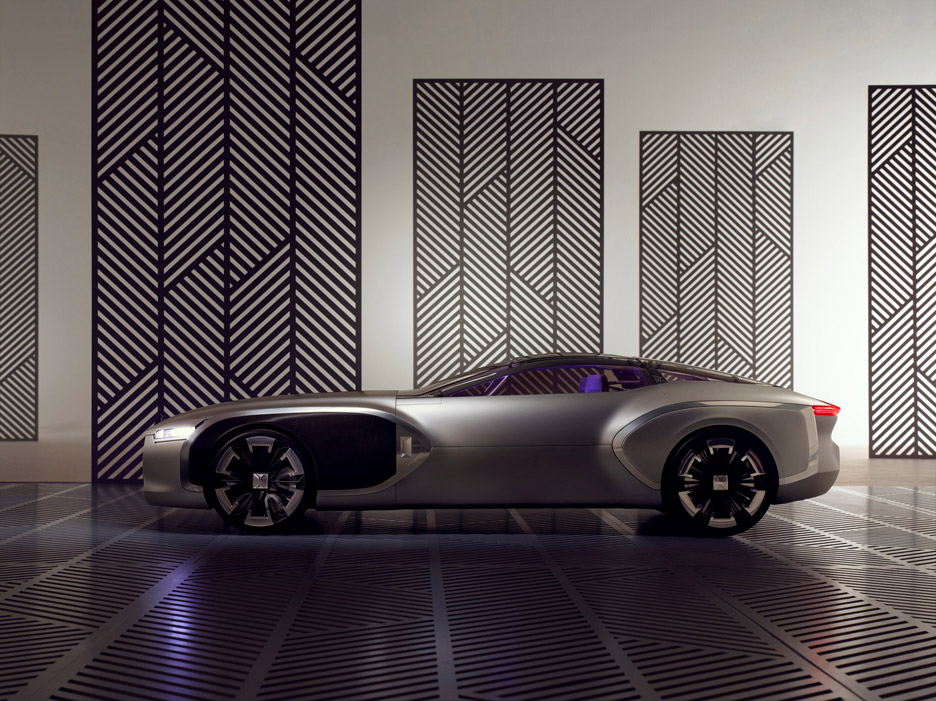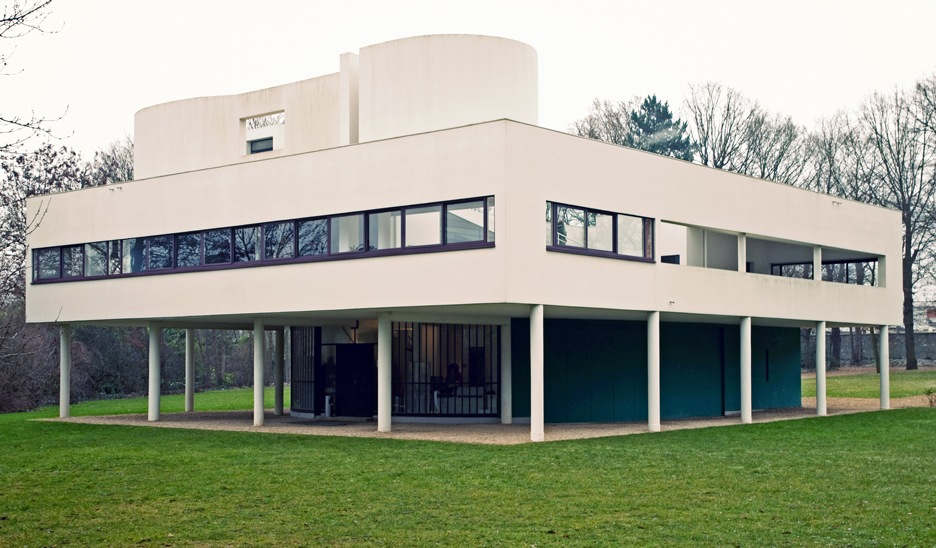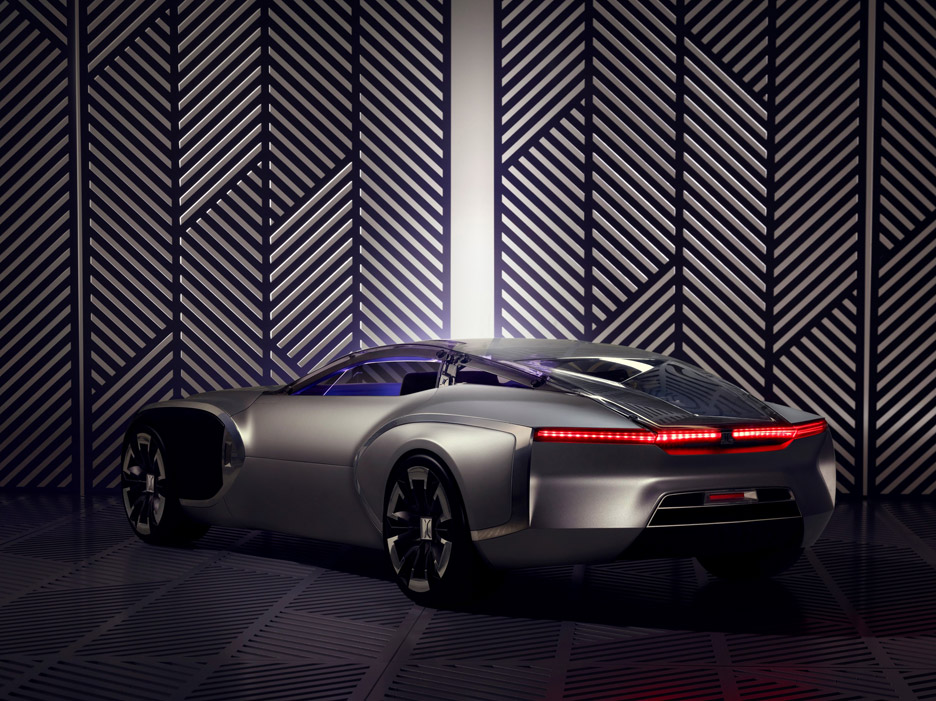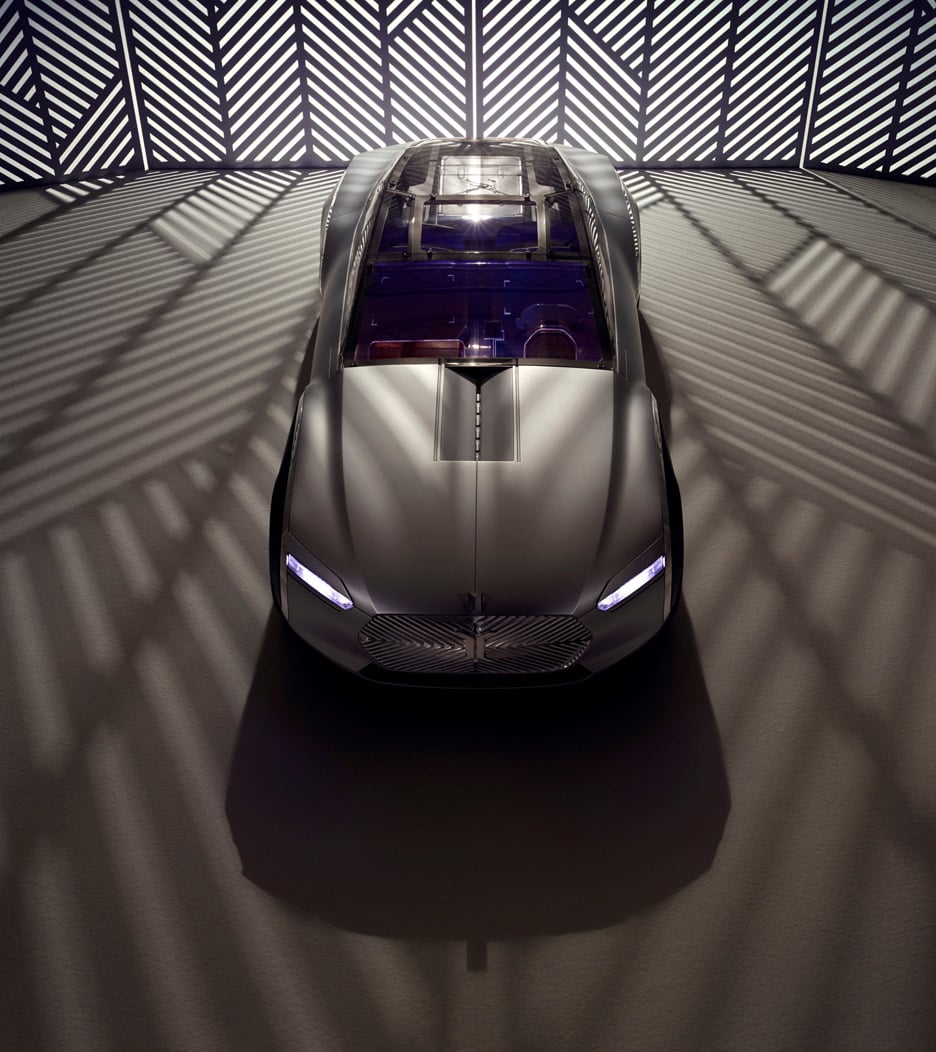Renault marks anniversary of Le Corbusier's death with Modernist-inspired concept car
French car manufacturer Renault has commemorated the 50th anniversary of the death of Le Corbusier by creating a concept car that references his Modernist architecture.
Unveiled last week, the Coupé C car features graphics around each of the front wheels designed to suggest that a section of the vehicle's body has been elevated – a loose reference to Le Corbusier's penchant for raising sections of his structures on thin piloti.

These dark panels contrast with the rest of the car's silver bodywork. The vehicle also features a prominent front grille made up of angled slats with thin headlights positioned either side of a long bonnet.
"The ideas of simplicity, a visually – and aesthetically – pleasing structure, geometric elegance and mastery of light guided the designers in the creation of the Coupé C concept car," said Renault.

Exaggerated wheel arches protrude from the Coupé C's rear bodywork while a line of brake lights traverse its entire width. Renault fitted the concept car with dihedral doors – commonly known as butterfly doors – which are hinged at the rear and open vertically.
"The design teams at Groupe Renault are proud to pay homage to the visionary architect and designer who reinvented architecture and made it more broadly accessible to the public," said Renault. "His thought and value structure is one that we share at Renault."
The company's industrial design team set out to investigate French cultural topics as design cues two years ago. This process led them to take a closer look at the 1930s – a period commonly referred to as the golden age of the modern automobile.
The interwar period also witnessed radical new ideas for architecture, pioneered in part by Le Corbusier, who championed a structural typology that allowed for open-plan and light-filled buildings. Examples of his projects include the Cité Radieuse housing block in Marseille and the Notre Dame de Haut chapel in Ronchamp.

Considered one of his most important works, the Villa Savoye was completed in 1931. According to Renault, the building highlighted a new relationship between architecture and the proliferation of vehicles at the time.
"The Villa Savoye is an icon of modernity," said Renault. "Designed as a modern and ideal holiday home, it was a part of the upward trend in country houses in Île-de-France that was underpinned by the rise of the automobile."
"The Villa Savoye establishes an intimate relationship between automobile and architecture."

The Coupé C is on display at the house, located in Poissy just outside Paris, as part of an exhibition organised by France's Centre des Monuments Nationaux. The exhibition, titled Cars for living: the automobile and Modernism in the 20th and 21st centuries, opened last week and will run until 20 March 2016.
Previous Renault concept vehicles include the Twin'Z created by British designer Ross Lovegrove, which features colourful LED patterns over the glass roof and down its windshield edges, as well as the drone-equipped Kwid Concept car capable of spotting slow-moving traffic in the distance.

Interest in Le Corbusier has remained strong since his death 50 years ago. Spanish designer Jaime Hayón recently launched a range of tables shaped to look like the curved structural elements of the Modernist architect's iconic buildings while a full-size model of his seminal Maison Dom-Ino was constructed at last year's Venice Architecture Biennale.